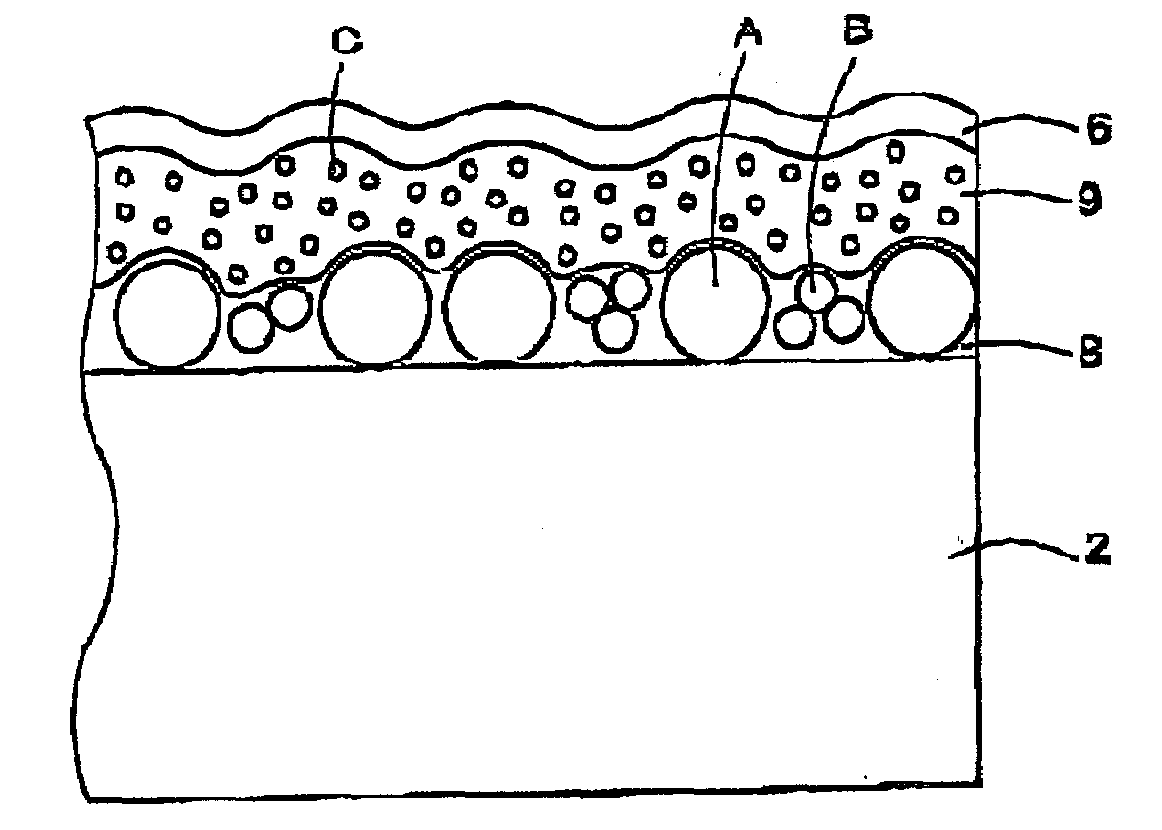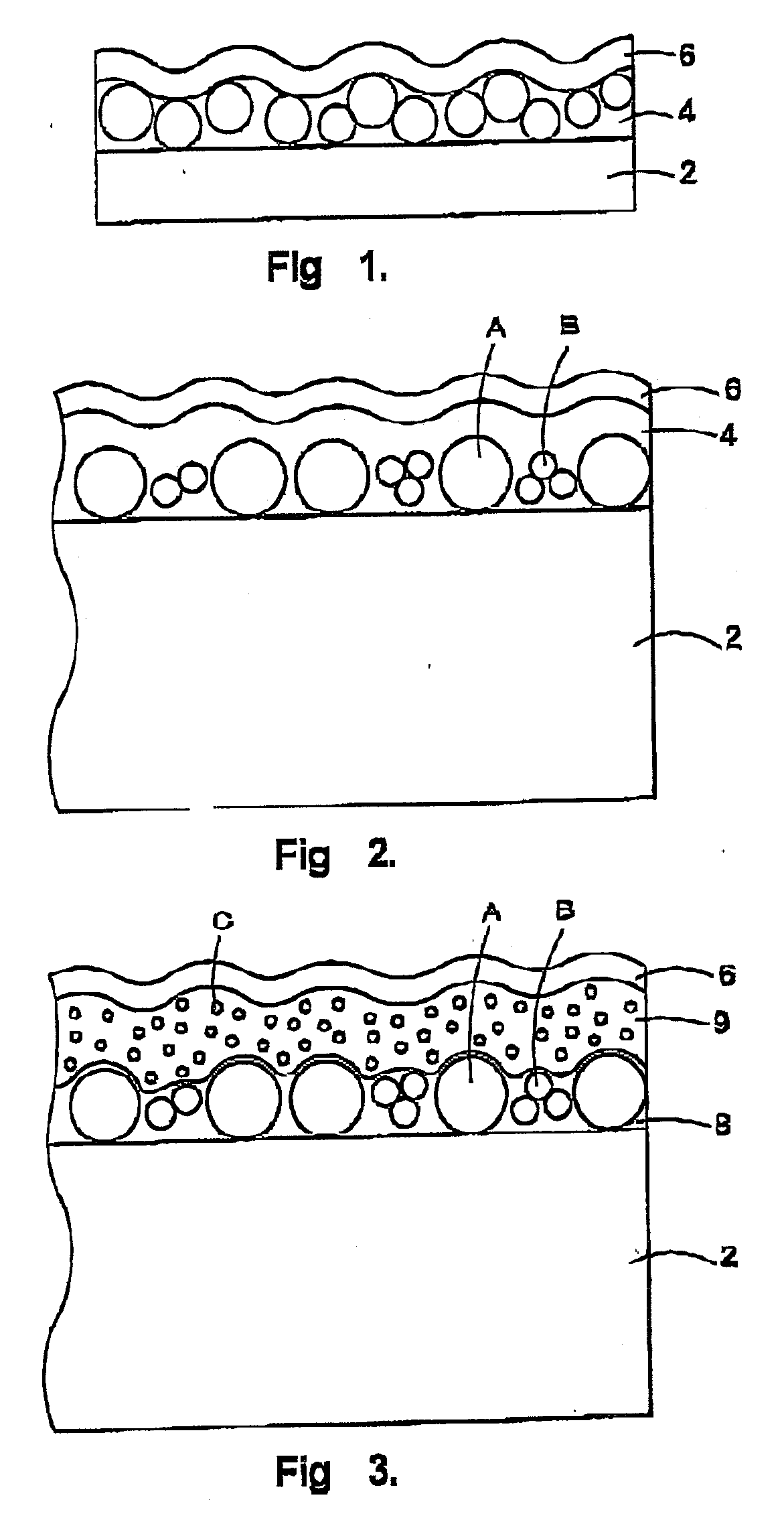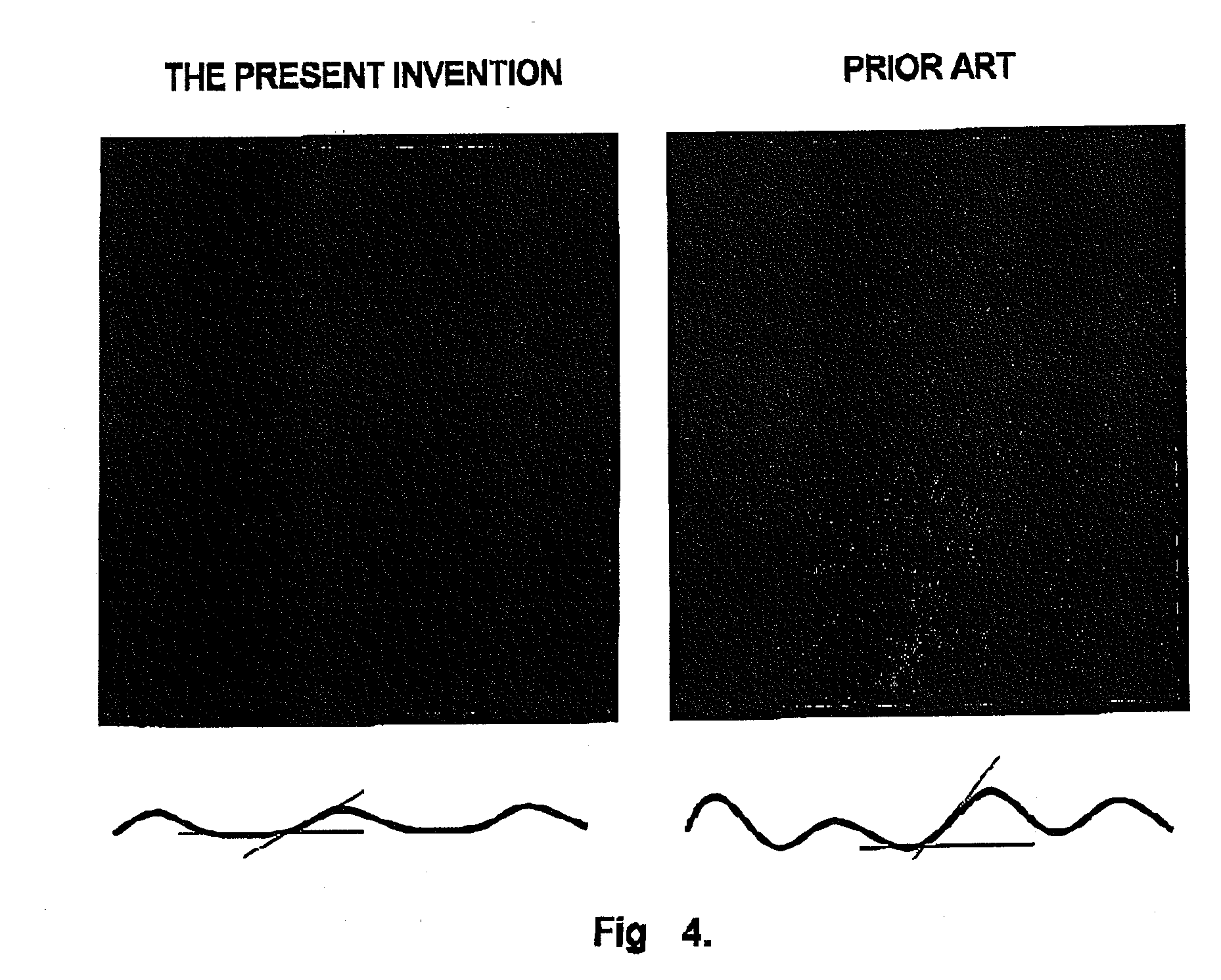Anti-dazzling optical laminate
- Summary
- Abstract
- Description
- Claims
- Application Information
AI Technical Summary
Benefits of technology
Problems solved by technology
Method used
Image
Examples
example 1
Formation of Substrate Concavoconvex Layer
[0327]An 80 μm-thick triacetylcellulose film (TD80U, manufactured by Fuji Photo Film Co., Ltd.) was provided as a transparent base material. Composition 1 for a substrate concavoconvex layer was coated onto the transparent base material with a wire-wound rod for coating (Mayer's bar) #10, and the coated transparent base material was heat dried in an oven of 70° C. for one min to evaporate the solvent component. Thereafter, under nitrogen purge (oxygen concentration: not more than 200 ppm), ultraviolet light was applied at an exposure of 14 mJ to cure the coating film and thus to form a substrate concavoconvex layer. In this case, the development of an internal diffusion effect and more effective prevention of scintillation could be realized by using fine particles having a maximum refractive index difference of 0.17 from that of the binder resin in the substrate concavoconvex layer.
[0328]Formation of Surface Modifying Layer
[0329]Composition ...
example 2
Formation of Substrate Concavoconvex Layer
[0330]An 80 μm-thick triacetylcellulose film (TD80U, manufactured by Fuji Photo Film Co., Ltd.) was provided as a transparent base material. Composition 2 for a substrate concavoconvex layer was coated onto the transparent base material with a wire-wound rod for coating (Mayer's bar) #10, and the coated transparent base material was heat dried in an oven of 70° C. for one min to evaporate the solvent component. Thereafter, ultraviolet light was applied at an exposure of 30 mJ to cure the coating film and thus to form a substrate concavoconvex layer. In this case, the development of an internal diffusion effect and more effective prevention of scintillation could be realized by using fine particles having a maximum refractive index difference of 0.09 from that of the binder resin in the substrate concavoconvex layer.
[0331]Formation of Surface Modifying Layer
[0332]Composition 1 for a surface modifying layer was further coated onto the substrat...
example 3
Formation of Substrate Concavoconvex Layer
[0333]An 80 μm-thick triacetylcellulose film (TD80U, manufactured by Fuji Photo Film Co., Ltd.) was provided as a transparent base material. Composition 2 for a substrate concavoconvex layer was coated onto the transparent base material with a wire-wound rod for coating (Mayer's bar) #10, and the coated transparent base material was heat dried in an oven of 70° C. for one min to evaporate the solvent component. Thereafter, ultraviolet light was applied at an exposure of 30 mJ to cure the coating film and thus to form a substrate concavoconvex layer. In this case, the development of an internal diffusion effect and more effective prevention of scintillation could be realized by using fine particles having a maximum refractive index difference of 0.09 from that of the binder resin in the substrate concavoconvex layer.
[0334]Formation of Surface Modifying Layer
[0335]Composition 3 for a surface modifying layer was further coated onto the substrat...
PUM
| Property | Measurement | Unit |
|---|---|---|
| Fraction | aaaaa | aaaaa |
| Fraction | aaaaa | aaaaa |
| Angle | aaaaa | aaaaa |
Abstract
Description
Claims
Application Information
 Login to View More
Login to View More - R&D
- Intellectual Property
- Life Sciences
- Materials
- Tech Scout
- Unparalleled Data Quality
- Higher Quality Content
- 60% Fewer Hallucinations
Browse by: Latest US Patents, China's latest patents, Technical Efficacy Thesaurus, Application Domain, Technology Topic, Popular Technical Reports.
© 2025 PatSnap. All rights reserved.Legal|Privacy policy|Modern Slavery Act Transparency Statement|Sitemap|About US| Contact US: help@patsnap.com



